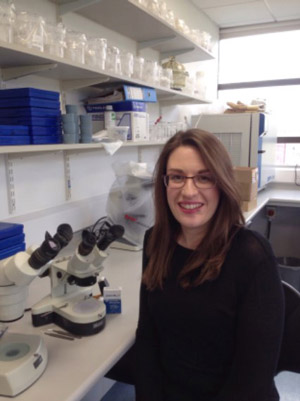Dr. Karen Taylor

Title: Chironomid response to prehistoric farming in northwest Ireland
When: Thursday 31st October, at 4pm
Where: Geography Library, Geography Building
ABSTRACT:
This research explores the utility and performance of chironomid (Diptera: Chironomidae) autecology in the investigation of prehistoric farming impacts on freshwater lake systems. Chironomid subfossils, lake sediment geochemistry (δ13C, δ15N and C:N) and pollen analyses were used in a comparative limnological assessment of three archaeologically rich study sites in County Sligo, Ireland. At all three study sites, pastoral farming and its associated nutrient inputs, as represented by non-arboreal pollen indicative of grassland/pasture (NAPp) and lake sediment geochemistry, were concomitant with increases in eutrophic chironomid taxa. Redundancy analysis (RDA) and partial RDAs established that δ15N and NAPp were controlling factors of chironomid community compositional change during the Neolithic (4000-2500 BC) and Bronze Age (2500-800/750 BC). Bronze Age farming had a considerably greater impact on the lake systems than Neolithic farming, as indicated by a higher proportion of eutrophic taxa and increases in δ15N, C:N and δ13C values, consistent with increased erosion and agricultural inputs. The timing and magnitude of change show that prehistoric farming exhibited a strong control over chironomid communities at all three sites. In order to verify the importance of prehistoric agricultural influences on the human impacted lakes, an isolated high-elevation catchment was used as a control site to reconstruct chironomid and geochemical response to broad-scale environmental change, where the pollen record showed negligible human activity. Given the lack of prehistoric human influence on the control lake, the record was used to construct the first mid to late Holocene chironomid-inferred temperature record for Ireland, creating a climatic context for the development of Irish society during the Neolithic and Bronze Age.
